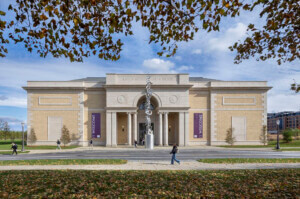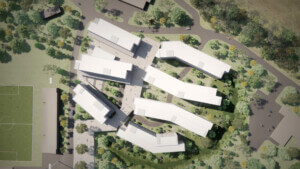A building initially designed by Mies van der Rohe in 1952 as a residence for the Pi Lambda Phi fraternity at Indiana University (IU)’s flagship campus in Bloomington, and decades later reimagined by Thomas Phifer and Partners as a multipurpose academic hall for the Eskenazi School of Art, Architecture + Design, has officially opened to students, faculty, and the public.
The debut of the two-story, 10,000-square-foot building on the IU campus concludes a nearly decade-long effort to first locate the original design documents and then revive the long-lost project while adapting it for contemporary use. In 2013, former IU president Michael A. McRobbie was first made aware of the existence of the nixed Mies design by Indiana real estate developer and philanthropist Sidney Eskenazi, an IU alumnus who also happens to be a member of the former chapter of Pi Lambda Phi. As part of what IU described as a “trail rediscovery,” the project documentation was ultimately unearthed by the university in the archives of the Art Institute of Chicago and the Museum of Modern Art in New York.
The original project was abandoned by Pi Lambda Phi back in 1957 due to a lack of funding.
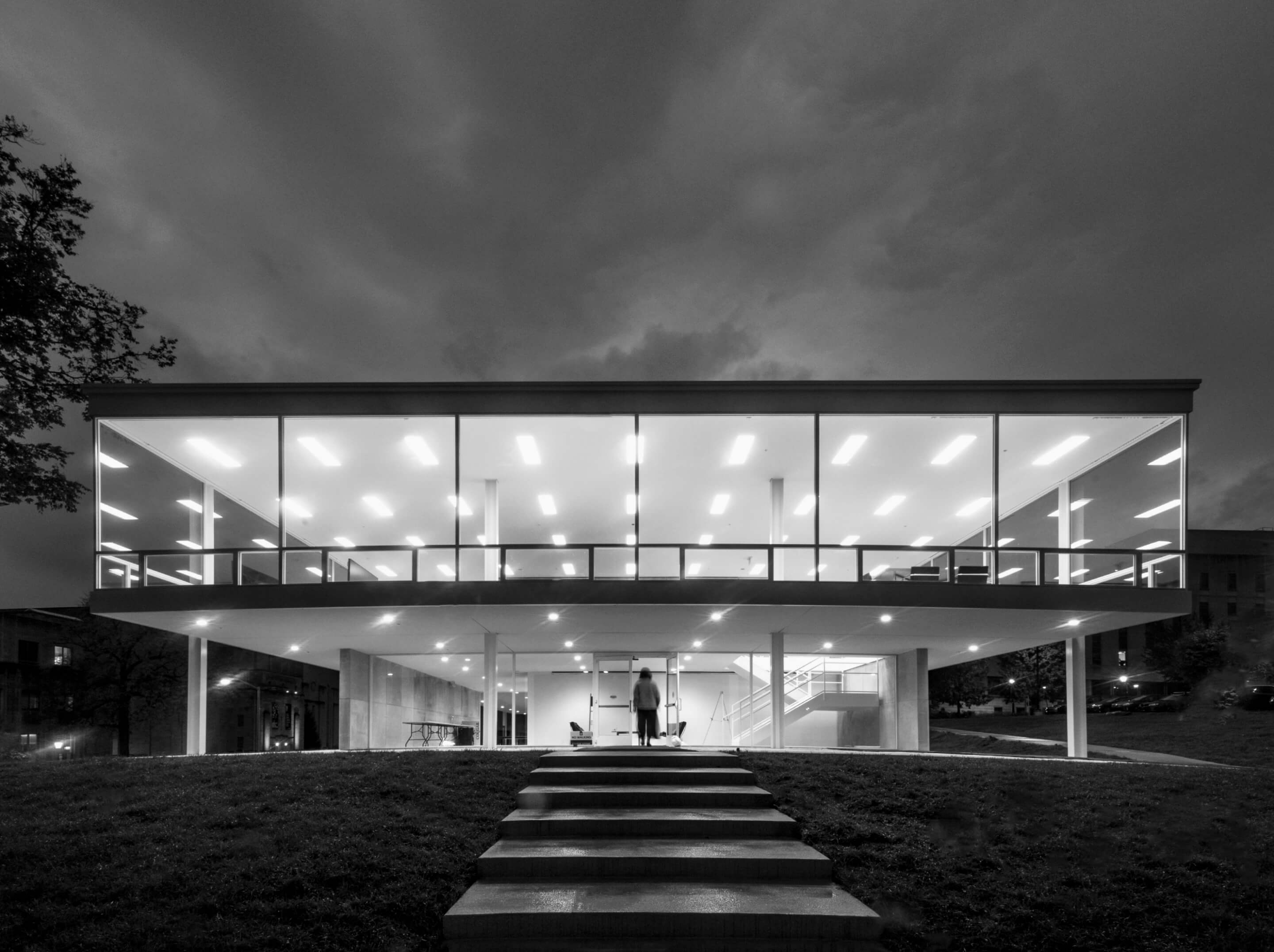
Six years later, in August 2019, IU announced it would realize Mies’s design not as a frat house but as a new academic building on the northeast corner of its limestone-heavy Bloomington campus with the blessing of the architect’s grandchildren. Thomas Phifer and Partners, which was already at work on the design of the Ferguson International Center at IU, was tapped to lead the project. The Ferguson International Center is currently under construction at a site directly across North Eagleson Avenue from the newly revived Mies building, which began work in September of 2020. Joining Thomas Phifer and Partners was Skidmore, Owings & Merrill (SOM) in the role of structural engineer, MEP engineer Cosentini Associates, and General Contractor CDI.
The $10 million building, which provides spaces for lectures, workshops, student collaborations, and offices and complements the Eskenazi School’s Columbus-based J. Irwin Miller Architecture Program, was made possible by a $20 million donation to the school from Sidney Eskenazi and his wife Lois. The Eskenazi name can also be found elsewhere campus. Housed in an I.M. Pei-designed building since 1982, IU Bloomington’s art museum, formerly known as the Indiana University Art Museum, was renamed the Sidney and Lois Eskenazi Museum of Art in 2016 following a significant gift from the couple.
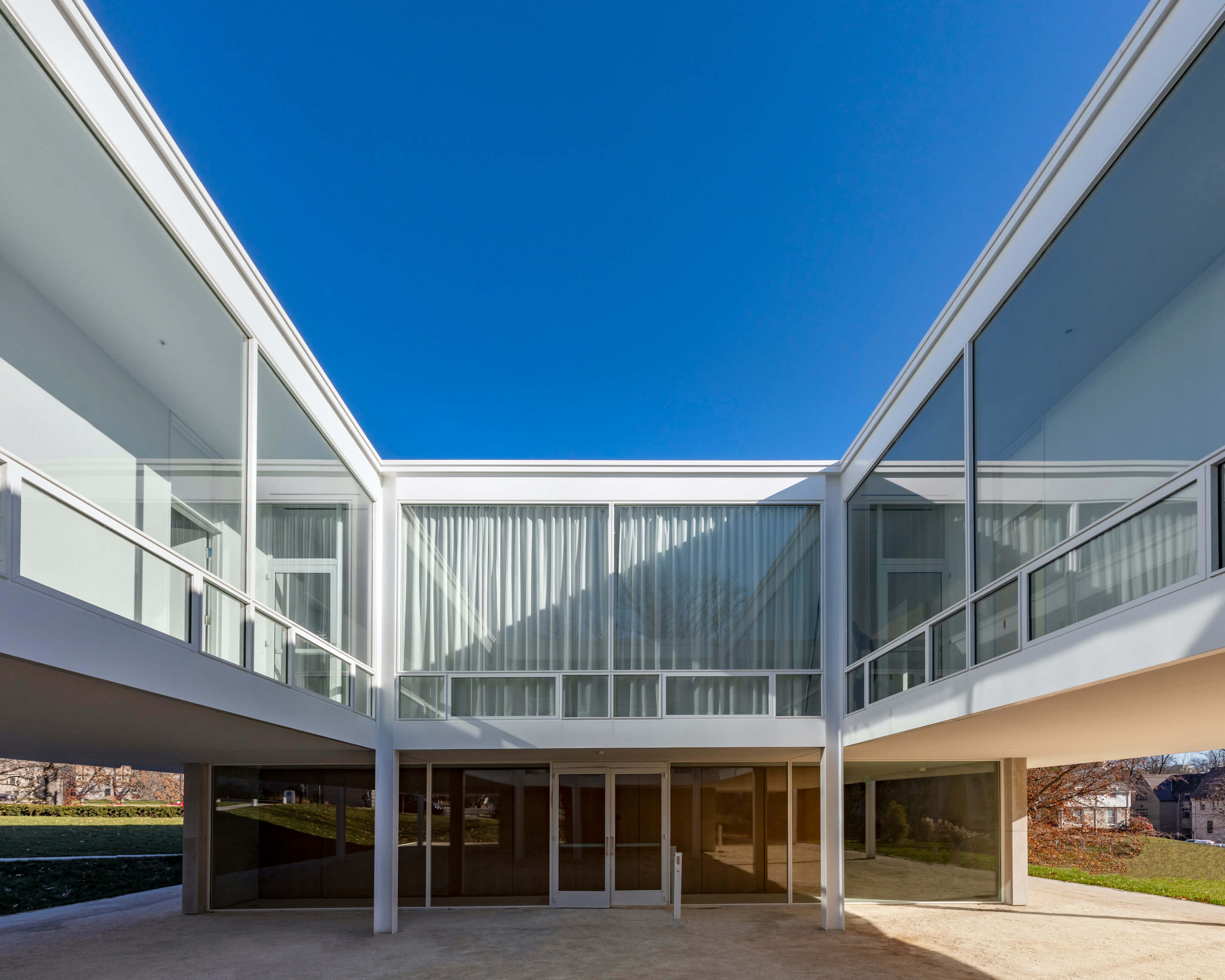
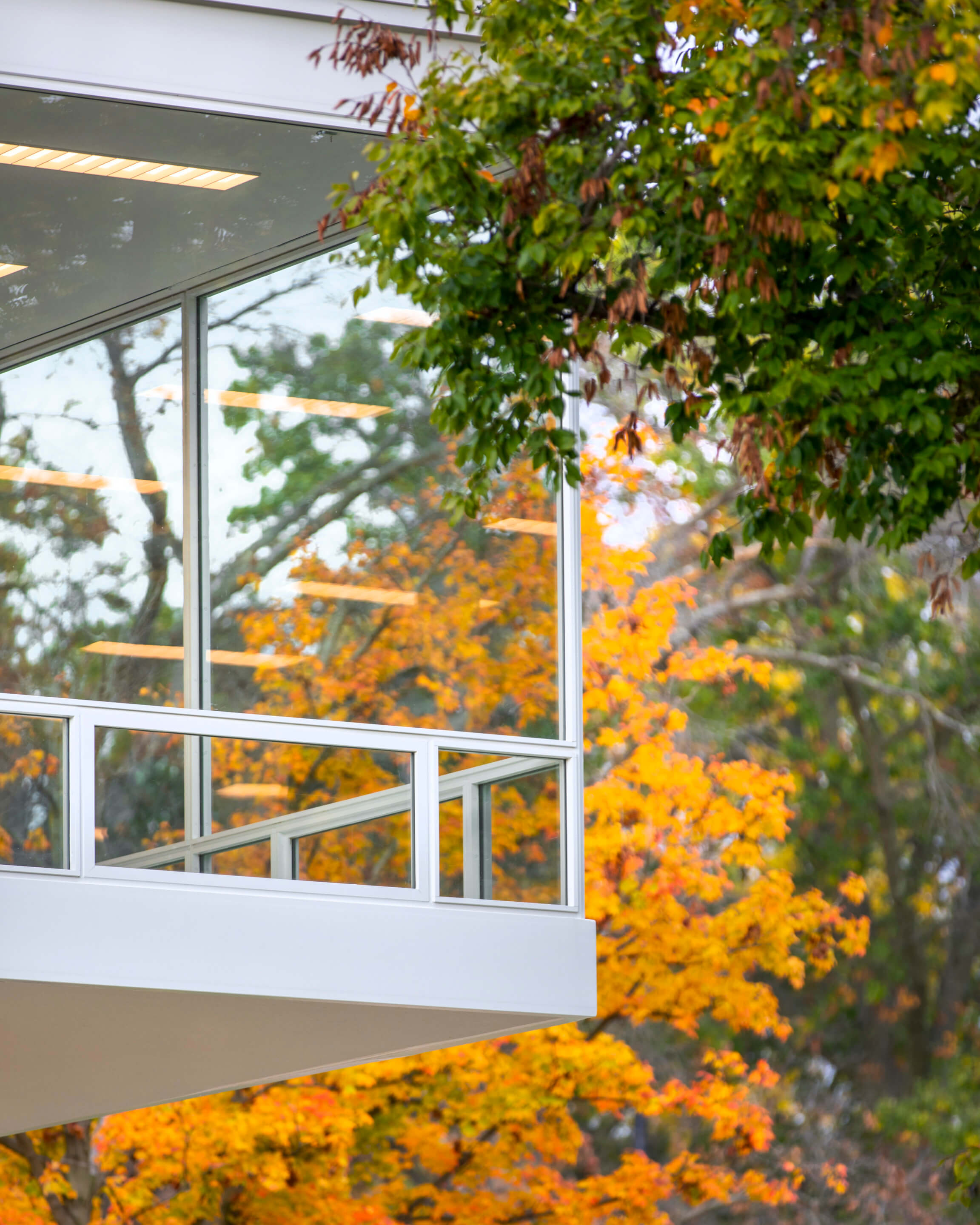
“We are thrilled to mark the opening of the Mies Building, which will enable faculty and students of all our School’s programs to come together and collaborate,” said Peg Faimon, dean of the Eskenazi School of Art, Architecture + Design, in a statement announcing the building’s opening. “Just as important, this magnificent building shows who we are, representing the excellence to which we are committed.”
“There can be no greater inspiration for us than to learn and work in a masterpiece by this titan of twentieth-century architecture,” Faimon added. “Let us hope that it will be a lasting monument to the power of collaborations and connections of all kinds—artistic, creative, intellectual and, above all, human.”
The effort to realize Mies’ unbuilt design decades after it was first conceived and then abandoned has been extensively covered by AN. “We did not want to change the proportions of anything: the structural steel, glass, or the floor system depth,” founding principal Thomas Phifer explained in a technical project profile published this past August. “We had the drawings, but also undertook an incredible amount of research into other Mies projects”—like the Farnsworth House and Crown Hall at the Illinois Institute of Technology in Chicago, as well as the Bacardi Building in Mexico City—“and assembled a catalogue of their materials and how they were detailed.”
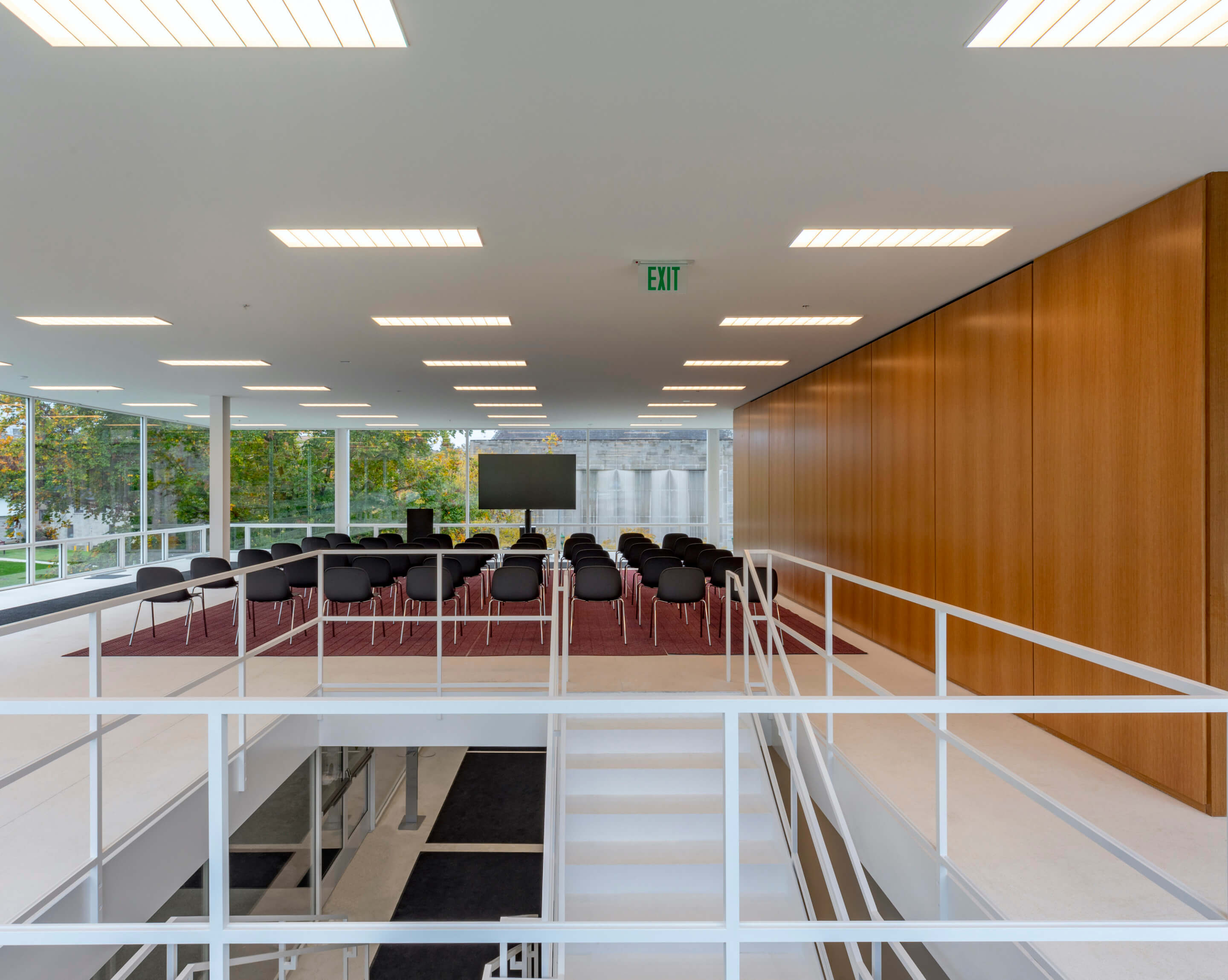
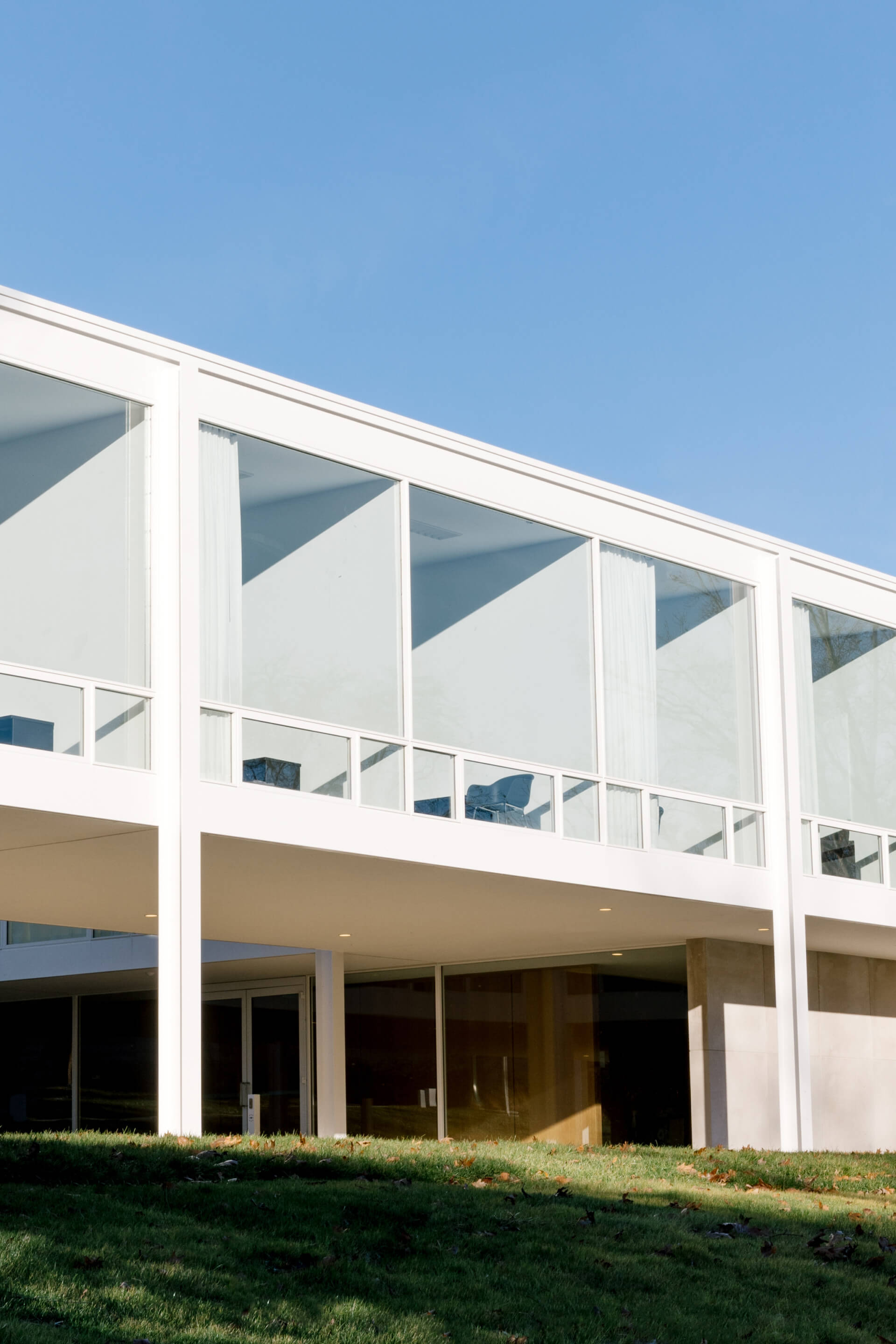
As mentioned by Phifer, research into the design of the Edith Farnsworth House, a National Historic Landmark located nearly 300 miles to the northwest of Bloomington in Plano, Illinois, played a key role in the realization of Mies’s unearthed project at IU. Measuring 60-feet-wide and 140-feet-long, the IU building, although considerably larger, bears several similarities to the Edith Farnsworth House chiefly in its use of white-painted structural steel to support two seemingly floating horizontal planes. Both projects also feature an ultra-transparent window wall system. Featuring a largely open-air lower level topped by a second story wrapped in floor-to-ceiling windows, the new building also includes “select furnishings” designed by Mies and Florence Knoll and chosen to “complement the building’s design and era,” per IU’s announcement.
While the completed building, which swaps out fraternity dorm rooms for offices and shared common space for the Eskenazi School, is faithful as possible to the original design, numerous elements were altered to meet 21st-century building codes and comfort requirements. For example, a stair was added at the west end within the original volume and the original open stair at the east end was modified for life-safety code compliance. A hydraulic elevator was also added for ADA accessibility. While the building is still equipped with radiant floor heating as per the original design, it now also features a fan-coil heating and cooling system and a central fresh-air ventilation system.
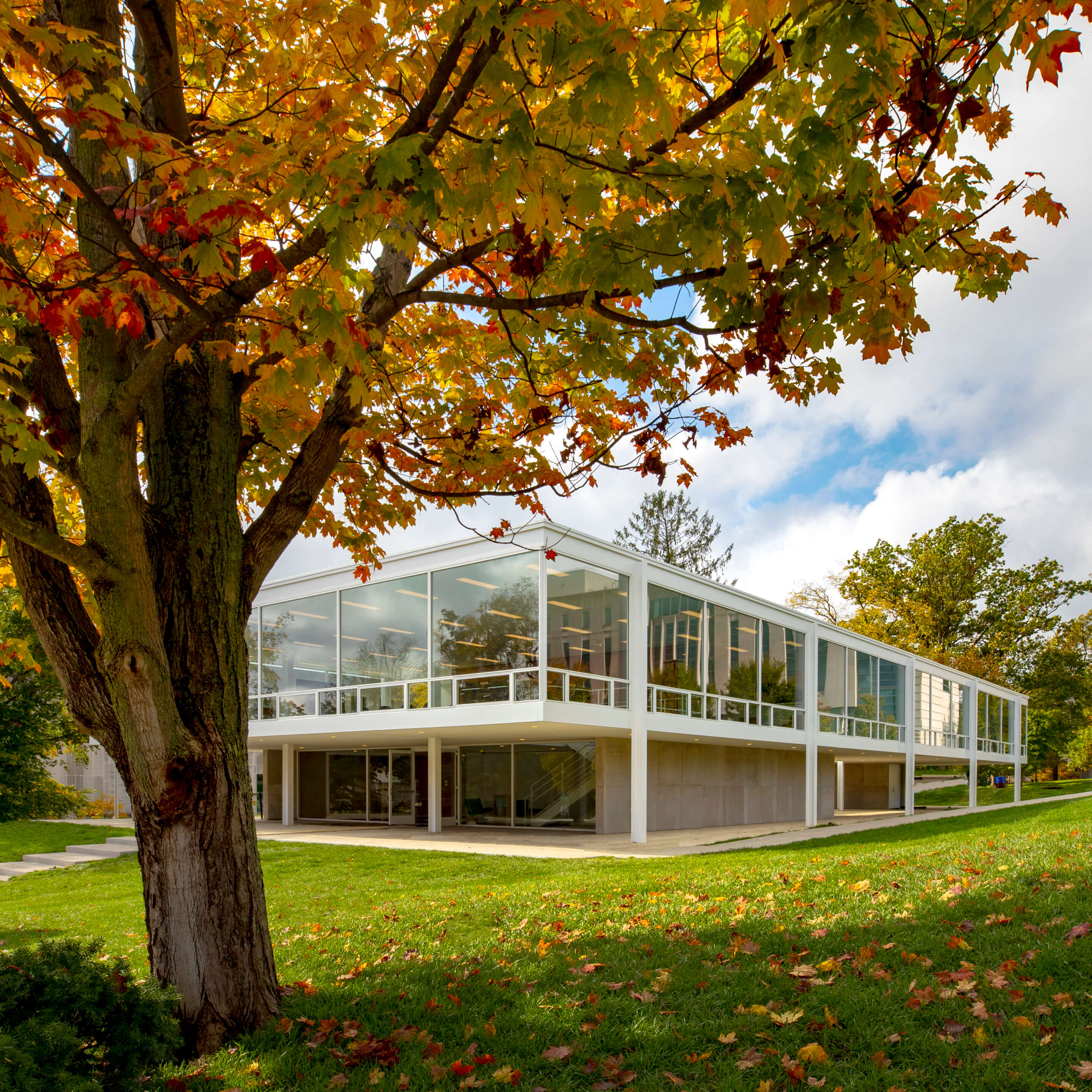
Meanwhile, the original single-pane clear glass envisioned by Mies has been replaced by insulating high-performance glass to comply with Indiana State Energy Code. What’s more, the ground-level plan has been reconfigured for code-compliant egress and the mechanical room has been expanded. The restrooms have also been reconfigured to meet ADA accessibility and plumbing occupancy code requirements.
On April 8, the Eskenazi School will host a public open house and reception. As part of the opening festivities, the school will also hold an invite-only panel discussion on the building’s background and design. Moderated by Adam Thies, Indiana University Associate Vice President, Capital Planning & Facilities, featured speakers on the panel will include Steve Dayton, project architect with Thomas Phifer and Partners; Ron Johnson, a structural engineer at SOM; and Edward Windhorst, Mies van der Rohe’s biographer.








